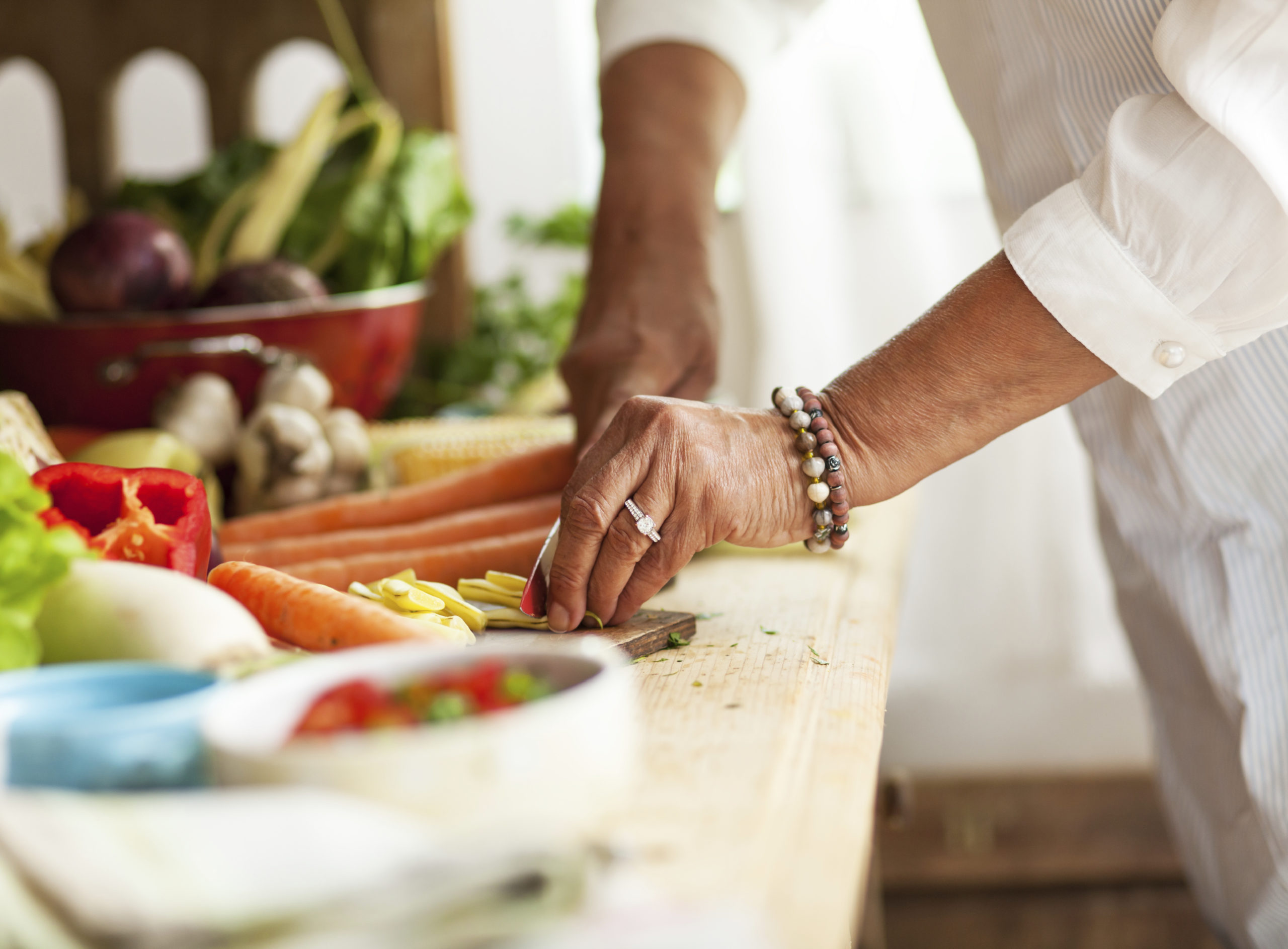9 Min Read
10 Budget-Friendly, Healthy Eating Tips for Seniors

As you age, your definition of healthy eating changes, too. For example, as you get older, your metabolism slows down, so you need fewer calories than you once did. You may also need more of certain nutrients like calcium, vitamin D, and fiber. That’s why it’s important for seniors to choose a diet that offers the best nutritional value.
Many seniors may also find themselves on a fixed monthly income and need to watch their overall expenses. Couple that with health and nutrition restrictions that often come with aging and eating healthy on a budget can be tricky. If you or your loved one needs help eating well without breaking the bank, consider these 10 tips.
1. Opt for store brands that cost less.
Generally, grocery store brands are less expensive, but they often taste just as good as their name brand counterparts. You may have to look for them on shelves that are higher or lower than eye level, but they’re worth the savings. While you’re at it, don’t be afraid to ask your grocer for senior discounts or loyalty or discount cards. In addition to getting items at a lower price, you may also find store coupons for future visits.
2. Plan ahead.
Before you head to the grocery store, write down a list of meals for the week and stick to it. Resist the urge to impulse buy. Consider meal prepping, too. Choose a day, like Sunday, to make several meals for the week ahead of time or prepare one large batch of a meal that can be saved for lunch and dinner leftovers the following days. Chop fresh vegetables for snacks or cook enough quinoa or brown rice for a few meals that week.
3. Cut or download coupons.
Using paper or digital coupons helps you save money. Scan the newspaper ads or check your favorite grocer’s website for weekly deals. If you’re a tech-savvy senior or caregiver, consider downloading apps like Ibotta or Checkout 51. With these apps, you can find discounts on common grocery store items and even earn cash back on your grocery purchases.
4. Freeze foods before they go bad.
Bananas overripe? Don’t think you’ll finish that spinach while it’s still fresh? A number of healthy foods freeze well, including meats, onions, peaches, squash, overripe bananas, brussels sprouts, and more. Avoid freezing vegetables with high water content that tend to become mushy when they thaw (lettuce, cucumbers, etc.)
5. Always check the nutrition labels.
Most healthy foods are found on the perimeter of the grocery store in the produce, meat, and dairy aisles. But, if you do eat packaged foods or reach for prepared meals, be a smart shopper and read the nutrition labels. Seniors should choose foods that are high in fiber and low in sodium or salt. Also, Vitamin D is important as you age. Check your labels for items that are lower in fat, added sugars, and sodium.
6. Buy seasonal.
Eating seasonally is not only less expensive, but it’s more nutritious too. You’re reducing your carbon footprint while also supporting local farmers and eating foods that are high in nutrients and low in unwanted pesticides. There’s no shortage of farmers markets in the Washington, D.C., metro area. Check out this list for local produce near you. Not sure what’s in season? Visit the U.S. Department of Agriculture’s website.
7. Look for frozen or canned foods, too.
Next time you’re trying a new or favorite recipe, try adding some frozen, canned, or dried fruits and vegetables to the mix. These items are often less expensive than their fresh alternatives but just as nutritious as they are dried, canned, or frozen at the peak of their freshness.
8. Don’t forget about the liquids.
People in their 70s and older sip less than 4 cups of plain water a day, but most women and men need about 7 glasses a day. Switching to water will save you money, plus it’s a healthy thirst-quencher without added sugars. If you need additional protein, vitamins D, B12, or calcium, and other antioxidants in your diet, consider drinks such as tea or low-fat or fat-free milk.
9. Dining out? Reduce your portion sizes.
Restaurants are notorious for supersizing everything. Next time you’re out to dinner with your parent or loved one, encourage them to split their meal in half (or thirds, depending on the quantity). Box up the rest and save it for lunch or dinner the next day to save money and added calories in one sitting.
10. Consider meal delivery.
If cooking at home is no longer an option, or you need help a few days a week, there are several companies and organizations that help to provide meals to seniors. Hello Fresh and Blue Apron are favorites. Meals on Wheels America prepares and delivers more than 1 million meals to seniors each day, while the Supplemental Nutrition Assistance Program (SNAP) helps seniors who have trouble affording fresh fruits and vegetables. There’s also Personal Chef to Go, Schwan’s, Silver Cuisine, and more.
Grand Oaks takes nutrition and dining very seriously—your health and palate are always top of mind. Our residents enjoy delicious, healthy meals prepare on-site by our executive chef. All foods are prepared with zero trans-fat using olive and canola oils and use only the healthiest, freshest ingredients that meet dietary requirements.

0 Comments